Monthly Archives: September 2019

 My grand-niece, Hattie Parmely is the second child of my nephew, Eric Parmely and his wife, Ashley. They live on a farm outside of Casper, where Hattie and her siblings Reagan, Bowen, and Maeve are learning the ropes of taking care of farm animals. They have chickens, goats, cows, dogs, cats, and horses. Hattie and her siblings have no qualms about helping out. They get right in there and help clean out stalls, feed the animals, and of course, love on the new babies as they come along. They totally love their fur babies.
My grand-niece, Hattie Parmely is the second child of my nephew, Eric Parmely and his wife, Ashley. They live on a farm outside of Casper, where Hattie and her siblings Reagan, Bowen, and Maeve are learning the ropes of taking care of farm animals. They have chickens, goats, cows, dogs, cats, and horses. Hattie and her siblings have no qualms about helping out. They get right in there and help clean out stalls, feed the animals, and of course, love on the new babies as they come along. They totally love their fur babies.
Hattie has mastered her bicycle now, and is becoming quite the equestrian. She looks so cute riding her little 
 pony. She can’t get up by herself yet, but that will come as she gets taller. Hattie has grown up around these horses, so she has learned to make them comfortable with her. It’s strange to see this little girl standing in the midst of great big horses. Yet she is not afraid, and they aren’t either.
pony. She can’t get up by herself yet, but that will come as she gets taller. Hattie has grown up around these horses, so she has learned to make them comfortable with her. It’s strange to see this little girl standing in the midst of great big horses. Yet she is not afraid, and they aren’t either.
Hattie, along with big sister Reagan, are their parents big helpers. With a little brother and a new little sister, there is lots to do. Hattie is learning all the things that she can do to help her parents around the house, and she stubbornly sticks to things until she has mastered them. Hattie is in the unique position of the two girls, because she has a big sister to show her the ropes. Reagan loves her little sister. The two girls are very close, and very good friends. I find that 
 siblings who live in the country tend to be good friends. Maybe it is the distance from other playmates, or maybe it is a mutual love that comes from learning to cooperate to get anything done. Whatever the case may be, these two girls are the best of friends. Of course, they both love their younger siblings too. Hattie is a very caring girl who often puts the needs of others ahead of herself. Kindness and compassion are traits that will carry her all her life. Today is Hattie’s 5th birthday. Happy birthday Hattie!! Have a great day!! We love you!!
siblings who live in the country tend to be good friends. Maybe it is the distance from other playmates, or maybe it is a mutual love that comes from learning to cooperate to get anything done. Whatever the case may be, these two girls are the best of friends. Of course, they both love their younger siblings too. Hattie is a very caring girl who often puts the needs of others ahead of herself. Kindness and compassion are traits that will carry her all her life. Today is Hattie’s 5th birthday. Happy birthday Hattie!! Have a great day!! We love you!!
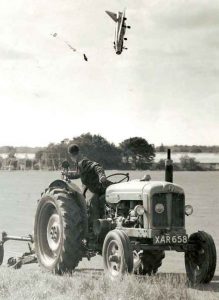 Sometimes we see a picture that looks so far-fetched that we assume that we are looking at a picture that has been photoshopped, and sometimes we are. Nevertheless, some pictures, unbelievable as they may seem, are the real deal. A while back, I stumbled upon an unbelievable photo of a plane crash, or rather the moment before the plane crashed. I was instantly intrigued. Could this be real? Or was it just a big ruse?
Sometimes we see a picture that looks so far-fetched that we assume that we are looking at a picture that has been photoshopped, and sometimes we are. Nevertheless, some pictures, unbelievable as they may seem, are the real deal. A while back, I stumbled upon an unbelievable photo of a plane crash, or rather the moment before the plane crashed. I was instantly intrigued. Could this be real? Or was it just a big ruse?
At the end of World War II, the English Electric Aviation Company received a contract to develop a jet bomber. The resulting bomber was the English Electric Lightning F1. The ER103 design study was sufficiently impressive for English Electric to be awarded the contract for two prototypes and a structural-test airframe. The early prototypes evolved into the Lightning, an airplane which was to span the time from when the Spitfire was our primary front-line fighter to the end of the Cold War. The Lightning was the only British designed and built fighter capable of speeds in excess of Mach 2 to serve with the Royal Air Force. The aircraft in the photograph was XG332. It was built in 1959, one of 20 pre-production Lightnings. Alan Sinfield took a photograph of XG332 in 1960 at Farnborough. However, it was the very last photograph taken of XG332, in 1962, that became the famous one, and deservedly so. How does someone manage to take a photograph like this? Jim Meads is the man who took the picture, but this was not the picture he expected to take that day. He was a professional photographer who lived near the airfield. In fact, he lived next door to de Havilland test pilot Bob Sowray.
Meads says that Bob Sowray mentioned that he was going to fly the Lightning that day. An excited Meads took his kids for a walk, taking his camera along, hoping to get a shot of the plane, and give his kids something amazing to remember. Well, that part of the walk went according to plan. It was a walk his kids would not soon forget. He had planned to take a photograph of the children with the airfield in the background, just as the Lightning came in to land. They found a good view of the final approach path and waited for the Lightning to return. As it turned out, Bob Sowray didn’t fly the Lightning that day. The pilot was George Aird, another test pilot working for De Havilland. George Aird was involved in the Red Top Air-to-Air Missile program. He was a well-respected test pilot.
The flight was to take place on September 19, 1962. The day did not go as planned in any way. George Aird was in the Lightning doing a demonstration flight off of the south coast. As he approached Hatfield from the north east, he realized that he had trouble. During the flight there was a fire in the aircraft’s reheat zone. “Un-burnt fuel in the rear fuselage had been ignited by a small crack in the jet pipe and had weakened the tailplane actuator anchorage. This weakened the tailplane control system which failed with the aircraft at 100 feet on final approach.” The plane suddenly pitched up, quite violently…just as Aird was coming in to land. Aird lost control of the aircraft and ejected. Had the nose of the plane not pitched up suddenly, Aird would not have had enough time to eject.
The tractor in the photograph was a Fordson Super Major. Upon close inspection of the grill, one can see that it reads D H Goblin, which is the name of another de Havilland jet engine…the Goblin. The tractor driver was 15-year-old Mick Sutterby, who spent that summer working on the airfield. He would play an amazing, but unexpected part in the amazing picture. He wasn’t posing for the camera, but rather, was telling the photographer, Jim Mead, to move on, because he shouldn’t be there. Mead saw the plane coming in and the nose pitch up. Then Aird ejected and Mead says he had just enough time to line up the shot as the Lightning came down nose first.
Sutterby recalls, “I followed my father into work at de Havilland, Hatfield in 1954 when I was 15. My father was the foreman in charge of the aerodrome and gardens. My job in the summer was gang-mowing the airfield and at the time of the crash in 1962 the grass had stopped growing and we were trimming round the ‘overshoot’ of the runway with a ‘side-mower’. I stopped to talk to a chap with a camera who was walking up a ditch to the overshoot. I stopped to tell him that he shouldn’t be here, I heard a roar and turned round and he took the picture! He turned out to be a friend of the pilot and had walked up the ditch to photograph his friend in the Lightning. I saw some bits fly off the plane before it crashed, but it was the photographer who told me he had ejected. There was not a big explosion when it crashed, just a loud ‘whhooooof’.”
“I was about 200 yards from the crash scene. I saw men running out of the greenhouses and checking the scene of the crash. The works fire brigade were on the scene within a minute. Somewhere at home I have a picture of it burning. Although the picture shows it nose diving to the ground, in fact it was slowly turning over and it hit the ground upside down nose first. I was later told that if the pilot had ejected a split second later he would have ejected himself into the ground. I was very lucky. If I had known he was coming into land, I would have been positioned near the ILS (Instrument Landing System) aerial which was only 20 yards or so from the crash site! I believe the photographer had his photo restricted by the Air Ministry for – I think – about 3 months because the plane was secret,” Sutterby said, almost as if in thought.
“He then took it to the Daily Mail who said it was a fake. The photo was eventually published by the Daily  Mirror. From there it went round the world, and I remember seeing a copy in the RAF museum at Hendon. I recollect the photographer usually photographed hunting scenes for magazines like The Field. I recollect that the pilot broke his legs but really was very lucky. I hope this is interesting. All from memory,” finished Sutterby.
Mirror. From there it went round the world, and I remember seeing a copy in the RAF museum at Hendon. I recollect the photographer usually photographed hunting scenes for magazines like The Field. I recollect that the pilot broke his legs but really was very lucky. I hope this is interesting. All from memory,” finished Sutterby.
George Aird didn’t have an easy landing, and in fact, landed on a greenhouse and fell through the roof. The fall broke both of his legs, and he landed on the ground, unconscious. The water from the sprinkler system for the tomatoes woke him up and he reportedly said that his first thought was that he must be in heaven. In the end no one was killed, but the resulting picture by Jim Meads is nothing short of spectacular!!
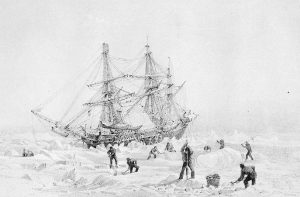 Modern day ships sailing the polar regions of our Earth have one distinct advantage over the much earlier counterparts…a radio. Radios wouldn’t be in place until 1899. The ships that sail these areas are trying to find new passages to cross the massive ice flows without having to sail far from their intended destinations in an effort to be in waters that are not frozen by the severe cold of the polar regions. When we think of ice, we rarely think of the shifting of the polar ice flows…or at least I didn’t really think of that. The changes in the day to day temperatures can create cracks in the ice, and the movement of the water below can either free a ship, or entrap it further, in an ever tightening squeeze hold that forces the crews to abandon the ship or risk being crushed to death when the ice moves again.
Modern day ships sailing the polar regions of our Earth have one distinct advantage over the much earlier counterparts…a radio. Radios wouldn’t be in place until 1899. The ships that sail these areas are trying to find new passages to cross the massive ice flows without having to sail far from their intended destinations in an effort to be in waters that are not frozen by the severe cold of the polar regions. When we think of ice, we rarely think of the shifting of the polar ice flows…or at least I didn’t really think of that. The changes in the day to day temperatures can create cracks in the ice, and the movement of the water below can either free a ship, or entrap it further, in an ever tightening squeeze hold that forces the crews to abandon the ship or risk being crushed to death when the ice moves again.
One such abandoned excursion was the case of the HMS Terror and the HMS Erebus. The ships were participating in Sir John Franklin’s ill-fated attempt to force the Northwest Passage in 1845, during which they were lost with all hands. Before leaving on the Franklin expedition, both Erebus and Terror underwent heavy modifications for the journey. They were both outfitted with steam engines, taken from former London and Greenwich Railway steam locomotives. The engines were rated at 25 horse power, and each could propel its ship at 4 knots. The pair of ships became the first Royal Navy ships to have steam-powered engines and screw propellers. The ships carried a twelve day supply of coal. Iron plating was added fore and aft on the ships’ hulls  to make them more resistant to pack ice, and their decks were cross-planked to distribute impact forces. Along with Erebus, Terror was stocked with supplies for their expedition, which included among other items: two tons of tobacco, 8,000 tins of preserves, and 2,000 of liquor. Terror’s library had 1,200 books, and the ship’s berths were heated by ducts that connected them to the stove.
to make them more resistant to pack ice, and their decks were cross-planked to distribute impact forces. Along with Erebus, Terror was stocked with supplies for their expedition, which included among other items: two tons of tobacco, 8,000 tins of preserves, and 2,000 of liquor. Terror’s library had 1,200 books, and the ship’s berths were heated by ducts that connected them to the stove.
Sir John Franklin was in command of the expedition into the Artic in HMS Erebus, and Captain Francis Crozier was in command of HMS Terror. The expedition was tasked with gathering magnetic data in the Canadian Arctic and to complete a crossing of the Northwest Passage, which had already been charted from both the east and west, but never entirely navigated. The expedition was planned to last three years. The expedition sailed from Greenhithe, Kent, on May 19, 1845, and the ships were last seen entering Baffin Bay in August 1845. When the ships did not return at the appointed time,a massive search effort began in 1848 and again in 1866 in the Arctic. Eventually, enough evidence was found to reveal the circumstances of the expedition’s fate. Both ships had become icebound and had to be abandoned by their crews. Sadly, all 129 crew members died of exposure and starvation while trying to trek overland to Fort Resolution, a Hudson’s Bay Company outpost 600 miles to the southwest. Subsequent expeditions up until the late 1980s, including autopsies of crew members, revealed that their canned rations may have been tainted by both lead and botulism. Oral reports by local Inuit that some of the crew members resorted to cannibalism were at least somewhat supported by forensic evidence of 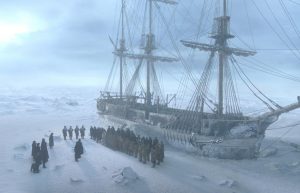 cut marks on the skeletal remains of crew members found on King William Island during the late 20th century.
cut marks on the skeletal remains of crew members found on King William Island during the late 20th century.
While crew members had been found over the years, the ships were not found for 169 and 171 years respectively. In 2014, the wreck of HMS Erebus was discovered, and on September 12, 2016, the Arctic Research Foundation announced that the wreck of Terror had been found ironically in Nunavut’s Terror Bay, off the southwest coast of King William Island. The wreck was discovered 57 miles south of the location where the ship was reported abandoned, and some 31 miles from the wreck of HMS Erebus.
 I’ve often thought, upon waking from a sleeping position that my body didn’t particularly like, that it would be wonderful to sleep in an anti-gravity machine. Maybe I would sleep better, and maybe I wouldn’t, but the reality is that it’s quite probable that man was not really intended for long periods of anti-gravity. While a few hours of blissful sleep, followed by no aches and pains from pillow or mattress, might be something wonderful to experience, I can fully see, after reading about the astronaut, Scott Kelly, who at least for a time spent the longest number of consecutive days at the International Space Station, in a state of anti-gravity. That number was 340 days.
I’ve often thought, upon waking from a sleeping position that my body didn’t particularly like, that it would be wonderful to sleep in an anti-gravity machine. Maybe I would sleep better, and maybe I wouldn’t, but the reality is that it’s quite probable that man was not really intended for long periods of anti-gravity. While a few hours of blissful sleep, followed by no aches and pains from pillow or mattress, might be something wonderful to experience, I can fully see, after reading about the astronaut, Scott Kelly, who at least for a time spent the longest number of consecutive days at the International Space Station, in a state of anti-gravity. That number was 340 days.
My first thought was of how gentle that must have been to his body, and maybe I would be right, but at some point, Kelly had to return to Earth. The experiment that he was a part of was over. The idea was to learn what the effects on the human body were in a prolonged state of  anti-gravity. It really hadn’t occurred to me that there might be any adverse effects, but apparently I would have been wrong. Among the complaints Kelly spoke of, one of the worst was a burning rash all over his skin. I wondered what might have caused that. The answer amazed me. The rash appeared on his back, legs, arm, and anywhere else where his body has touched the bed he now sleeps in. Not only is there a rash, but it is inflamed, feeling hot to the touch. Okay, my body may not like my mattress and pillow all the time, but it doesn’t give me a burning rash, so maybe it’s not so bad after all, and since I only occasionally wake up achy from my night’s sleep, I’ll deal with it.
anti-gravity. It really hadn’t occurred to me that there might be any adverse effects, but apparently I would have been wrong. Among the complaints Kelly spoke of, one of the worst was a burning rash all over his skin. I wondered what might have caused that. The answer amazed me. The rash appeared on his back, legs, arm, and anywhere else where his body has touched the bed he now sleeps in. Not only is there a rash, but it is inflamed, feeling hot to the touch. Okay, my body may not like my mattress and pillow all the time, but it doesn’t give me a burning rash, so maybe it’s not so bad after all, and since I only occasionally wake up achy from my night’s sleep, I’ll deal with it.
Among the other complaints Kelly suffered, were feelings of nausea (possibly a vertigo type of an issue), a  stumbling gait from legs that are not used to gravity (Kelly’s vestibular system was trying to readjust to Earth’s gravity…like learning to walk all over again), an altered sense of gravity (waking up feeling like he is upside down), muscle atrophy from muscles that weren’t used, an all-over body ache from the pressures of gravity, and a constant grogginess, just to name a few. Of course, short -term anti-gravity such as I would experience by sleeping in an anti-gravity machine, would be very unlikely to produce any adverse conditions, like prolonged anti-gravity did in Kelly. Nevertheless, because our bodies are designed to work with gravity, I suppose my sleep idea is not such a good idea after all. At least, I don’t think it is one that I am willing to take a chance on.
stumbling gait from legs that are not used to gravity (Kelly’s vestibular system was trying to readjust to Earth’s gravity…like learning to walk all over again), an altered sense of gravity (waking up feeling like he is upside down), muscle atrophy from muscles that weren’t used, an all-over body ache from the pressures of gravity, and a constant grogginess, just to name a few. Of course, short -term anti-gravity such as I would experience by sleeping in an anti-gravity machine, would be very unlikely to produce any adverse conditions, like prolonged anti-gravity did in Kelly. Nevertheless, because our bodies are designed to work with gravity, I suppose my sleep idea is not such a good idea after all. At least, I don’t think it is one that I am willing to take a chance on.

 When two people get married, everyone wonders how their lives will turn out. More than wondering if they will stay together is the question of will they make a good team? Or will they always seem to be going in the same direction? These are all things that no one knows at the point that a couple gets married. Those question and many others will be answered when the couple has been married a number of years.
When two people get married, everyone wonders how their lives will turn out. More than wondering if they will stay together is the question of will they make a good team? Or will they always seem to be going in the same direction? These are all things that no one knows at the point that a couple gets married. Those question and many others will be answered when the couple has been married a number of years.
Our youngest daughter, Amy Royce and her husband, Tavis have stood the test of time, and after 24 years of marriage, I can say that the do make a good team, and they are usually going in the same direction…except during football season, when he roots for the Chicago Bears, and she for the Green Bay Packers. Still, more important than that is the genuine desire to give each other the best life possible. Their motto is “Live, Laugh, Love,” and they do just that.
They love living in northern Washington state, and spending lots of time outdoors. Sitting around their firepit is a common evening event, as is playing a variety of games with their grown children, Shai and Caalab, and their significant others, Jordan Chapman and Chloe Foster. They like playing Beer Pong, darts, and Corn Hole, but recently they bought a pool table, which will be lots of fun with the onset of cooler weather. Of course, north-west Washington state doesn’t see the same kind of cold weather that we get in Wyoming, but that doesn’t stop it from feeling like it’s freezing, even when it’s just rain. That said, those indoor activities will be essential.
It really doesn’t matter what Amy and Travis are doing, as long as they are doing it together, because they love each other very much. I can’t imagine two people more suited to each other than these two. As a parent, it is 
 wonderful to know that the man your daughter shares her life with is so good to her, and makes her life a joyous occasion every day. He makes her laugh at his silly jokes, and always lets her know that she is the love of his life. She, in turn, completes him in every way, and lets him know that he is the love of her life. Does life get better than that? I don’t think so. Today is Amy and Travis’ 24th anniversary. Happy Anniversary Amy and Travis!! Have a wonderful day!! We love you!!
wonderful to know that the man your daughter shares her life with is so good to her, and makes her life a joyous occasion every day. He makes her laugh at his silly jokes, and always lets her know that she is the love of his life. She, in turn, completes him in every way, and lets him know that he is the love of her life. Does life get better than that? I don’t think so. Today is Amy and Travis’ 24th anniversary. Happy Anniversary Amy and Travis!! Have a wonderful day!! We love you!!
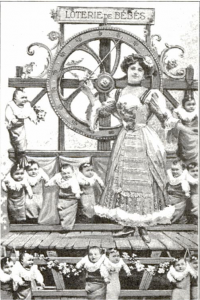 It sounds like something straight out of the annals of criminal behavior, but while it is strange, the authorities decided that it wasn’t illegal. Everyone knows that the adoption process, and the cost involved can make it almost impossible for many parents to adopt a child, but in late 1911, Parisians seeking to become parents could do things the regular way. Or they could take a more unusual option offered to them that year: A baby lottery. That’s right a baby lottery.
It sounds like something straight out of the annals of criminal behavior, but while it is strange, the authorities decided that it wasn’t illegal. Everyone knows that the adoption process, and the cost involved can make it almost impossible for many parents to adopt a child, but in late 1911, Parisians seeking to become parents could do things the regular way. Or they could take a more unusual option offered to them that year: A baby lottery. That’s right a baby lottery.
In January 1912, a foundling hospital, which was actually a children’s home, decided to hold “a raffle of live babies.” The hospital’s management check on the legalities and once they received the go-ahead, the plan went forward. The plan was two-fold. They wanted to find homes for these sweet abandoned babies, and they wanted to raise funds for the children’s home and other charitable institutions.
To protect the innocent babies, “An investigation of the winners was made, of course, to determine their desirability as foster parents.” By modern standards, this sort of thing feels bizarre and crazy, not to mention neglectful. But, as John F Ptak points out in his blog post about the lottery, “in comparison with some bitter early histories of the want of tenderness in the care of children, and keeping in mind the great leap forward in the creation of the foundling hospitals and what they represented in the face of not having anywhere for unwanted and impossible babies to go, the idea of the lottery for cute babies in 1912 doesn’t look so bad when placed in its historical context…With the terrible history of infanticide and exposure not too dimly removed from this time, the lottery seems far less horrible than its antiquarian components.” I would agree. While the idea was odd, it was similar to the Orphan Trains, with the exception of the background checks done on the parents wanting these babies.
It is an amazing thing when we look back on it, and most of us would be somewhat appalled, but for these  babies, it was a chance at a loving home, and it would appear that it worked very well…at least in that era. I don’t know how successful such a thing would be in this day and age. The dangers would very likely outweigh the good, and that is sad, because adoption is so expensive that many families remain childless. They just don’t have the money to go through a reputable agency, and anything else is a scary proposition. I would worry about they kinds of people who would try for something like this these days too. Most would be fine I’m sure, but there are a lot of crazy people out there too. I think the 1912 Paris Baby Lottery was an event of another era that will most likely never be seen again.
babies, it was a chance at a loving home, and it would appear that it worked very well…at least in that era. I don’t know how successful such a thing would be in this day and age. The dangers would very likely outweigh the good, and that is sad, because adoption is so expensive that many families remain childless. They just don’t have the money to go through a reputable agency, and anything else is a scary proposition. I would worry about they kinds of people who would try for something like this these days too. Most would be fine I’m sure, but there are a lot of crazy people out there too. I think the 1912 Paris Baby Lottery was an event of another era that will most likely never be seen again.
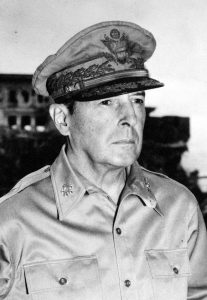 Opinions vary as to who the worst generals of World War II were, and I can’t say where I stand on the issue, but after researching several of the battles fought, whether won or lost, I can see how people could make up their own minds on the issue. It must also be noted that even the worst general can have enough good men under him to bring success through multiple blunders on the part of the general. Then, the general is considered a war hero. It doesn’t always happen, but sometimes, it does.
Opinions vary as to who the worst generals of World War II were, and I can’t say where I stand on the issue, but after researching several of the battles fought, whether won or lost, I can see how people could make up their own minds on the issue. It must also be noted that even the worst general can have enough good men under him to bring success through multiple blunders on the part of the general. Then, the general is considered a war hero. It doesn’t always happen, but sometimes, it does.
On September 14, 1944, the US 1st Marine Division landed on the island of Peleliu, one of the Palau Islands in the Pacific. It was part of a larger operation to provide support for General Douglas MacArthur, who was preparing to invade the Philippines. The Palaus were part of the Caroline Islands. They were among the mandated islands taken from Germany and given to Japan as one of the terms of the Treaty of Versailles at the close of World War I. The US military was unfamiliar with the islands, and Admiral William Halsey had argued against Operation Stalemate, which included the Army invasion of Morotai in the Dutch East Indies. He believed that MacArthur would meet minimal resistance in the Philippines, making this operation unnecessary, especially given the risks involved.
General William Henry Rupertus was the commander of the 1st Marine Division when they attacked the Japanese-held island Peleliu. Rupertus mistakenly predicted that the island would fall within 4 days. With that in mind, he sent his troops ashore with minimal water supplies. The battle was a horror show that dragged on for nearly 75 days. The Marines thought they knew how to attack the island, but the Japanese were using some new, innovative tactics, and so the Marines were unprepared. Nevertheless, Rupertus stuck to his original plan, even as casualties mounted, even withdrawing tank support for a critical assault, mistakenly believing it wasn’t needed. It’s actions like this that make you wonder how he ever got to be a general, I guess the Marines agreed, because Rupertus was pulled from command and soon died of a heart attack. The 1st Marine Division was pulled out after a month of vicious combat. They were in such bad shape that the division didn’t fight again for six months.
The pre-invasion bombardment of Peleliu had somehow seemed important, at the time, but it proved to be of no real help. The Japanese defenders of the island were buried too deep in the jungle, and the target intelligence given the Americans was faulty. Upon landing, the Marines met little immediate resistance, but that was a maneuver to get them further onto the island. Shortly thereafter, Japanese machine guns opened fire, knocking out more than two dozen landing craft. Scores of Japanese tanks and troops immediately stormed upon the marines. The shocked 1st and 5th Marine regiments fought for their lives. Jungle caves seemingly exploded with Japanese soldiers. Within one week of the invasion, the Marines lost 4,000 men. By the time it was all over, that number would surpass 9,000. The Japanese lost more than 13,000 men. Flamethrowers and bombs finally subdued the island for the Americans, but in the end, it all proved pointless. MacArthur invaded the Philippines without need of Army or Marine protection from either Peleliu or Morotai.

While MacArthur has a reputation as one of the most innovative and courageous generals in US history, he also committed inexplicable blunders at multiple points in the war. After the attack on Pearl Harbor, MacArthur was ordered to carry out pre-war attack plans on Japanese bases, but he gave no reply. As a result, Japanese planes immediately attacked, wiping out his air force. His thinly spaced and poorly supplied US and Filipino forces crumbled, and he was ordered to evacuate Manila with his command staff. About 150,000 Allied troops had been killed, wounded, or captured. His bold conduct over the next four years gained him a justifiable reputation as a war hero, but he was also reckless, arrogant, and careerist. He saw his role as the occupational governor of Japan as a stepping-stone to running for president and pardoned Japanese war criminals involved in human experimentation. These are not things that a general in the United States military should be doing, and while he was considered a hero by some, there were many others who would seriously disagree.

 My little grand-niece, Mackenzie Moore is a loyal football fan…of her daddy’s teams. It doesn’t matter what team it is, as long as her daddy, Shannon Moore is one of the coaches. Currently, Mackenzie is a huge fan of the Wyoming Cowboys. As her daddy says, she loves the Pokes. Mackenzie always has her game face on at the games, and she cheers on her daddy’s team faithfully. In fact, at two years old, Mackenzie is quite likely the littlest Pokes fan. This little girl is such a loyal fan that she even makes sure she is bringing her baby up to be a fan. I guess she is getting set for the next generation of fans.
My little grand-niece, Mackenzie Moore is a loyal football fan…of her daddy’s teams. It doesn’t matter what team it is, as long as her daddy, Shannon Moore is one of the coaches. Currently, Mackenzie is a huge fan of the Wyoming Cowboys. As her daddy says, she loves the Pokes. Mackenzie always has her game face on at the games, and she cheers on her daddy’s team faithfully. In fact, at two years old, Mackenzie is quite likely the littlest Pokes fan. This little girl is such a loyal fan that she even makes sure she is bringing her baby up to be a fan. I guess she is getting set for the next generation of fans.
Mackenzie has an amazing personality. She always keeps her parents, Lindsay and Shannon, laughing and quite entertained. Nobody ever has to tell this little girl to smile, because its just a part of her nature. Mackenzie loves people and loves making them smile, and it comes so naturally to her. She makes the greatest faces ever. One look and you can’t help but love this little girl…or laugh along with this little cutie. She love playing with her cousins the most, and considers “cousin-time” to be the very best time of all…well, except for mommy and daddy time.
The summer was a great one for Mackenzie, who got to travel some, spend time with her grandparents, and of 
 course hang out with her mommy by the pool. Mackenzie loves her time as a lady of leisure too. That’s a good thing, because before we know it, she will be going to school. Time goes so fast. I really can’t believe that Mackenzie is two years old already. It seems like it was just yesterday that she was born. With all the wonderful life moments this little girl packs into every day, I can’t wait to see what the next year will bring. Of course, I wish that we, the rest of her family, got to see her a little more, but now that her family lives in Wyoming again, we get to see her more than we did before, when they lived back east. That makes us happy. We are all happy about the move back to Wyoming. Today is Mackenzie’s 2nd birthday. Happy birthday Mackenzie!! Have a great day!! We love you!!
course hang out with her mommy by the pool. Mackenzie loves her time as a lady of leisure too. That’s a good thing, because before we know it, she will be going to school. Time goes so fast. I really can’t believe that Mackenzie is two years old already. It seems like it was just yesterday that she was born. With all the wonderful life moments this little girl packs into every day, I can’t wait to see what the next year will bring. Of course, I wish that we, the rest of her family, got to see her a little more, but now that her family lives in Wyoming again, we get to see her more than we did before, when they lived back east. That makes us happy. We are all happy about the move back to Wyoming. Today is Mackenzie’s 2nd birthday. Happy birthday Mackenzie!! Have a great day!! We love you!!
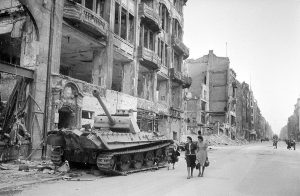 World War II took it’s toll on many people. The soldiers, families at home, and probably unknown to the people of the Allied nations…the German people. When we think of the Nazis, we think of an entire country so filled with hate for the Jewish people…as well as any nationality that was different that the Nazi white people. The reality is that while there were a relatively small number of Hitler’s puppets to actually embraced the thinking and the hatred of Hitler; there were also a great many of the German people who were not Nazis, nor did they agree with anything that Hitler did or believed. They were good and decent people, who valued life, and just wanted to work hard, and live their lives in peace and happiness.
World War II took it’s toll on many people. The soldiers, families at home, and probably unknown to the people of the Allied nations…the German people. When we think of the Nazis, we think of an entire country so filled with hate for the Jewish people…as well as any nationality that was different that the Nazi white people. The reality is that while there were a relatively small number of Hitler’s puppets to actually embraced the thinking and the hatred of Hitler; there were also a great many of the German people who were not Nazis, nor did they agree with anything that Hitler did or believed. They were good and decent people, who valued life, and just wanted to work hard, and live their lives in peace and happiness.
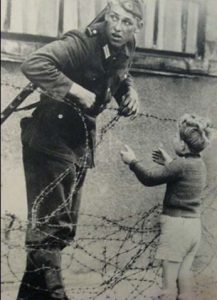
These post-war German citizens were faced with a new and strange kind of post-war reality. The country suffered from collective PTSD. Said one German citizen, “We were a broken, defeated, extinguished people in 1045. 60 million human beings suffered from PTDS. And Knowing that not only did you lose…but also that you were on the wrong side. On the wrong side of morality, of humanity, of history. We were the bad guys. There was no pride. Just the knowledge that we were at rock bottom, and rightfully so.”
As American and Allies, it is hard for us to accept their feelings of remorse. I’m sure that the Jews, Gypsies, and other persecuted races had an even harder time feeling bad for the German people…at least, not unless they were some of the German citizens who escaped from Germany along with other refugees, or those who helped their Jewish or Gypsy counterparts to escape or to survive. One of those sympathizers who lived, warned his children and grandchildren, saying, “Don’t forget, but don’t tell anyone about this.” He was so ashamed and so angry, still, 40, 50 years 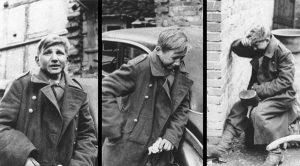 later. He said that the Nazis had taken the best years of his life, saying, “We must look out for them, it can happen again. Beware, pay attention to politics! Speak up! We couldn’t stop them, maybe you can, next time.” The man hammered these things into his grandchild’s brain, over and over and over. He knew the dangers of complacency where politics is concerned. He knew that if they take your guns you are helpless. He knew that if evil people get in office, the danger grows exponentially. He had seen it…first hand. It is a lesson many people today need to learn. It could happen again, if we aren’t vigilant.
later. He said that the Nazis had taken the best years of his life, saying, “We must look out for them, it can happen again. Beware, pay attention to politics! Speak up! We couldn’t stop them, maybe you can, next time.” The man hammered these things into his grandchild’s brain, over and over and over. He knew the dangers of complacency where politics is concerned. He knew that if they take your guns you are helpless. He knew that if evil people get in office, the danger grows exponentially. He had seen it…first hand. It is a lesson many people today need to learn. It could happen again, if we aren’t vigilant.

 It hardly seems possible that 18 years have passed since our nation was brutally attacked on our own soil by Al-Qaeda terrorists, and yet sometimes it seems like so many people who are adults now, don’t really remember 9-11, so they don’t understand the importance. It’s not an unusual thing, I guess, because they were only told about what happened. It might seem like a movie, more than a reality. Nevertheless, it did happen. On that dreadful day, a series of four coordinated terrorist attacks by the Islamic group, Al-Qaeda were carried out against the United States on the morning of Tuesday, September 11, 2001. The attacks killed 2,996 people, injured over 6,000 others, and caused at least $10 billion in infrastructure and property damage. Additional people died of 9/11-related cancer and respiratory diseases in the months and years following the attacks. We, the people of the United States, sat stunned in front of our television sets, trying to grasp what had happened. We were shocked, angry, and terribly grieved. We vowed never to forget. And most of us have not forgotten.
It hardly seems possible that 18 years have passed since our nation was brutally attacked on our own soil by Al-Qaeda terrorists, and yet sometimes it seems like so many people who are adults now, don’t really remember 9-11, so they don’t understand the importance. It’s not an unusual thing, I guess, because they were only told about what happened. It might seem like a movie, more than a reality. Nevertheless, it did happen. On that dreadful day, a series of four coordinated terrorist attacks by the Islamic group, Al-Qaeda were carried out against the United States on the morning of Tuesday, September 11, 2001. The attacks killed 2,996 people, injured over 6,000 others, and caused at least $10 billion in infrastructure and property damage. Additional people died of 9/11-related cancer and respiratory diseases in the months and years following the attacks. We, the people of the United States, sat stunned in front of our television sets, trying to grasp what had happened. We were shocked, angry, and terribly grieved. We vowed never to forget. And most of us have not forgotten.
Still, with time comes acceptance. Not that I think that is a good thing, because with acceptance comes complacency. We feel like we can’t change anything, so the best solution is to simply get along. Don’t rock the boat. Try to live together in peace. It all sounds so loving, so…Christian. Unfortunately, the only ones that are trying to “get along and live together in peace,” are the Christians, and maybe the Jews, who have been through such things before, and are getting tired of being the target of slaughter. But, should we be trying to get along with the devil? We have seen the evil that comes with these hateful people who target innocent people who are just trying to live their lives. The don’t care about living in peace with us!! The only want us to comply with their demands.
I have seen so many people saying that they miss 9/12, and I think I agree with them. Yes that horrific day had happened…the unthinkable was in our midst. We were scratching through the rubble, trying to find yet one more alive, though not many would come out of the rubble. The survivors were, for the most part, those who managed to escape before the towers came down. Still, on 9/12, there was something else…there was determination, anger, and love for our fellow man. We were determined to rise out of the ashes, and take back our Pre-9/11 lives, to catch those who did this, and make them pay for what they had done. And we did!!
But then, as the years went by, we tried to get along, hoping that this would never happen again…an impossible feat. Our “get along” spirit did not stop other attacks. We began to hear of places like Benghazi, and 
 even the attack on the US Embassy in Kabul, Afghanistan this morning. The “get along” spirit wasn’t…isn’t working. They hate us simply because we are Christians and Jews, Americans…free people, who don’t believe as they do. September 11, 2001 was a horrible day, very likely the worst in the history of the United States, but I agree with so many others who say they miss 9/12, because on that day, we were no longer the “sleeping giant.” We woke up and realized that we can’t be complacent, because they will kill those who sit idly by and do nothing. We must either continue to fight for our freedom…or we will lose our freedom. We must begin again to recognize our enemy…foreign or domestic. The war hasn’t ended. It continues. We must fight for our freedoms.
even the attack on the US Embassy in Kabul, Afghanistan this morning. The “get along” spirit wasn’t…isn’t working. They hate us simply because we are Christians and Jews, Americans…free people, who don’t believe as they do. September 11, 2001 was a horrible day, very likely the worst in the history of the United States, but I agree with so many others who say they miss 9/12, because on that day, we were no longer the “sleeping giant.” We woke up and realized that we can’t be complacent, because they will kill those who sit idly by and do nothing. We must either continue to fight for our freedom…or we will lose our freedom. We must begin again to recognize our enemy…foreign or domestic. The war hasn’t ended. It continues. We must fight for our freedoms.

